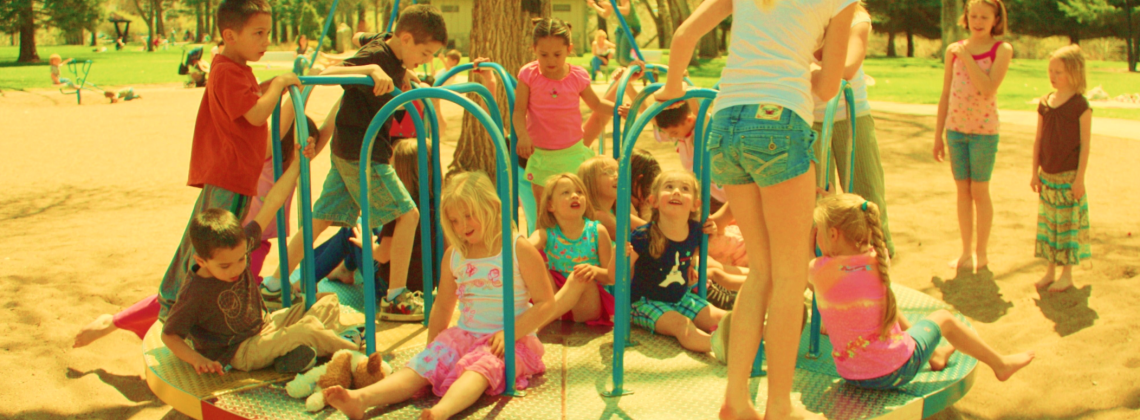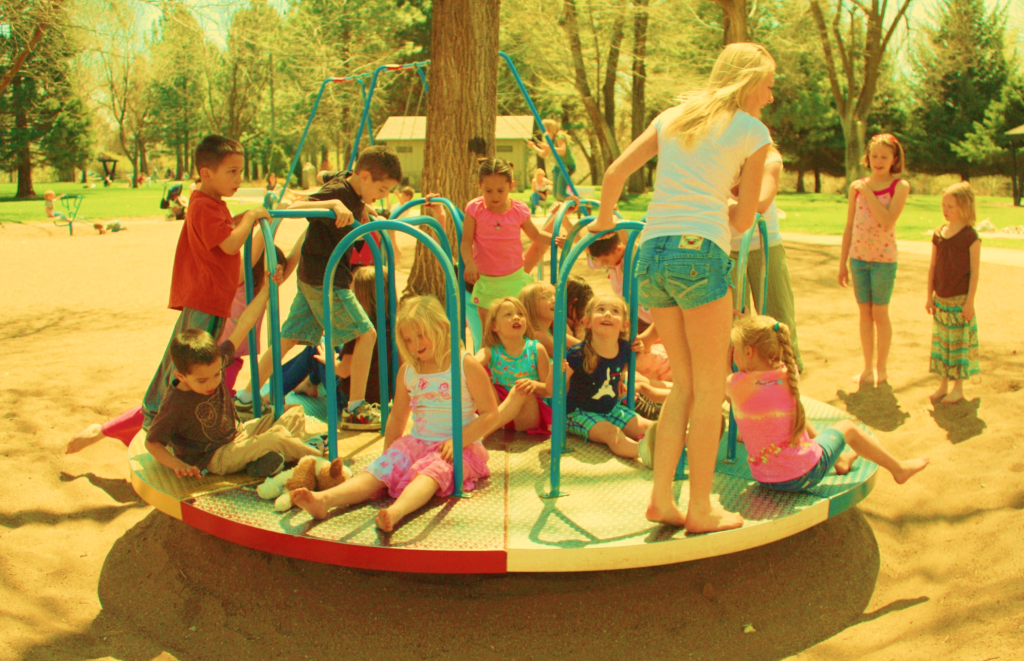

On the merits and limits of pro-natal progressivism
What Are Children For? On Ambivalence and Choice by Anastasia Berg and Rachel Wiseman. St. Martin’s Press, 2024. 336 pp., $27.00
Now even the Surgeon General says it’s hard to be a parent. Last month Vivek Murthy warned that the “stress and mental health challenges” that American parents face constitute a “serious public health concern.” Beyond the demanding care of bodies and souls that childrearing requires, Murthy blames contemporary ills for making things harder, including time pressures that slight the work of parenting and social media’s toxic competitiveness that leaves parents hesitant to ask for help.
Whatever the backstory that turned Murthy’s attention to stressed parents, his announcement echoes recent articulate writers lamenting mom culture or advocating bigger families. Raising kids is both rewarding and difficult. As Murthy puts it, “When I became a parent, a friend told me I was signing up for a lifetime of joy and worry.”
Fewer Americans of childbearing age now find such a lifetime of joy and worry appealing. Why bother having children when you could do something else instead? In their new book, Rachel Wiseman and Anastasia Berg address the growing number of American adults who share such ambivalence. They ask: What are children for?
People used to assume human life is “essentially intergenerational,” each life receiving from the past and giving to the future. The authors recover a version of this argument: The reason to have children is not because you happen to like children but because we can live well when oriented to the human future.
They make arguments from social science, literature, and philosophy. They are not trying to push people to raise kids, though some pages blaze with beautiful language that evokes the solid, aching good of having children. First and foremost, though, they aim to respect and correct ambivalence. They prefer that adults make a definite decision about children rather than letting indecision run out the clock.
Based on interviews and analysis, Berg and Wiseman offer a taxonomy of legitimate grounds for hesitation—from the milder worry that children will distract from satisfying careers, relationships, or lifestyles, to the more serious concerns about money (can’t afford kids), and the most grave distress over climate change (can’t burden the dying planet with these extra kids or burden them with the dying planet).
Taking care of children certainly is hard work, but work is not the best definition of what parents do with their kids. Yet maybe designating something as work is the only way Americans now know how to ascribe value to it. Emphasizing the work of parenthood is at once symptom and cause of parental ambivalence. Encouraging adults to imagine the work of changing diapers, reading bedtime stories, and scheduling wisdom-teeth extractions alongside their actual jobs can make childrearing look like low-wage burnout.
There are better and worse reasons to have children, though reasons may be mixed. For instance, couples whose health or history or profession could make parenting detrimental may wisely choose to remain without offspring. On the other hand, some reasons not to have children are not very good.
Seth Rogen, the authors note, attributes his marital felicity to childlessness—“lying in bed on Saturday morning smoking weed, watching movies naked. If we had kids, we could not be fucking doing this.” Some interviewees “see having a kid as this extra layer of confining in terms of my choices,” and others don’t want to give up what makes “my life comfortable and enjoyable as is”—a sentiment that may be our era’s experiential equivalent of the 1980s bumper sticker promising that he who dies with most stuff wins.
I wonder about these people, their lives so comfortable and enjoyable. Are they exempt from cancer and car accidents, downsizing and discontinuance, hurricanes, floods, or rumors of war? The dream lives that they insulate from interruption are not unattractive. But they are glazed with an aura of make-believe. Their independence is a costume worn over lives made possible by financial and moral support—support often provided by their parents. The authors gently probe the immaturity of those who choose to be childfree because they like their life and don’t want crying babies and sticky fingers and runny noses to mess it up.
But this self-aware childlessness is different from ambivalence. The ambivalent do not know whether to choose children or how to make the decision. Within a populace lacking intergenerational self-awareness, I think what the authors see as “widespread separation and compartmentalization of romance and family” best explains ambivalence.
Until fairly recently, most Americans would have met the choice to have children with assumptions inherited from centuries before: People have sex; that makes babies; then those people raise the babies.
That script had variations. It sometimes got a romantic or religious gloss—the child as incarnation of loving union. The script was subject to abuse and to honor in the breach. Certainly culture has sometimes configured that sequence in ways disadvantageous to women. Still, the package—love, commitment, parenthood, family life—can be linked in ways that honor men, women, and children all together.
When isolated rather than bundled with the other goods, childbearing loses some theoretical and practical appeal. Twenty-first-century adulthood with a clear path for romance and employment but no clear path for children cuts away the rationales that linked the separate parts—rationales of beloveds sharing family life and earning money to support it.
The ability to disconnect babies from sex enabled lovers to distinguish potential-parent partners from others and to limit offspring. Spacing offspring could harmonize timing of children with other activities, education or work, or until a couple was ready. When being ready is determined mostly by external factors, robust family life is compatible with this kind of planning. When the readiness women and men await is mostly internal, reduced to function of desire or psyche, it may never come.
Wanting to be a mother is not the same thing as wanting to have a baby or to raise a child or to live as a family. Whatever one wants in wanting a child, it is likely quite different from what one will get in any particular child. A person’s desire to have a child does not necessarily speak to the question of what children are for. They may relate, but their distinctions highlight the constitutive condition of ambivalence.
Both social-media moms who babble about their cute babies and curmudgeonly cool urbanites who condemn kids as boring utterly miss the point. British writer Lucy Jones skewers the error in her book Matrescence, exclaiming how strange it is that “this state that I knew intimately, the closest I have ever been to death, to birth, to growth, to the co-conscious, to rapture, to rupture—was, according to the world around me, boring.” For somebody thinking about the fact of children, free association should not so much pull up images of playgrounds and popsicles as cosmic whorls of life, loss, gift, beauty—and that in the mind of the ordinary person-on-the-street, living in a body once birthed, not only in minds of people who choose to start their own families.
Most of the book is co-written. But Wiseman has the introduction and Berg the conclusion, where she controversially asserts that motherhood did not change her identity. Her point in part is that expecting transformation can deter those already content with their identity. Berg gives no quarter to earnest platitudes that motherhood transforms a woman. Transformed or no, Berg stunningly writes that “when you have a child, you bind your fate, how well things fare for you, with that of another being as infinitely vulnerable as you. This means that when you die, even if all goes well, you die with your own fate still unsettled, up in the air.”
I think she’s wrong about transformation. But I agree that children should not come pre-burdened with the duty to transform their parents. Transformation of young adults into responsible, visionary ones should not require the next generation as means to this end. As the authors put it, “Whether we act responsibly does not depend simply on whether we bring children into the world, but on how seriously we take our duties as parents and as human beings.”
That ideal of responsibility explains why, counterintuitively, the book may have an easier time persuading people with grave reasons against having children than those with flimsy ones. As the authors remind the uncertain, if you are reading this book, your children are probably not going to be those experiencing the harshest effects of climate change. Also, if you are reading this book, you may not need admonitions to act responsibly and take duties seriously.
This is a pro-natal book with a progressive slant. Berg and Wiseman want readers to consider parenthood without fearing they have fallen into a tradwife trap. Though the authors give due regard to particular cases, the problem of ambivalence owes not so much to the millions of individuals uncertain whether or not to be parents but to the broad cultural ambivalence that surrounds them.
Agnes R. Howard teaches in Christ College, the honors college at Valparaiso University, and is author of Showing: What Pregnancy Tells Us about Being Human. She is a Contributing Editor for Current.
Image: Wikimedia Commons